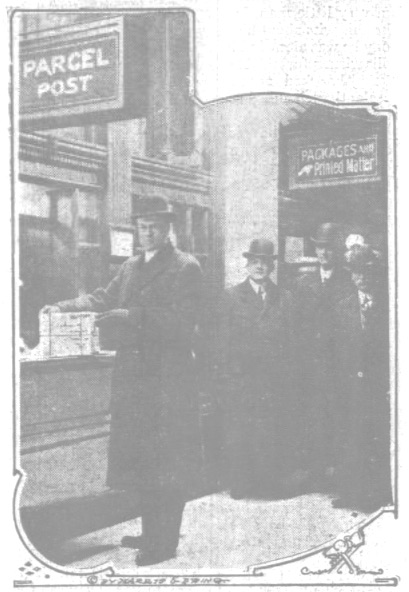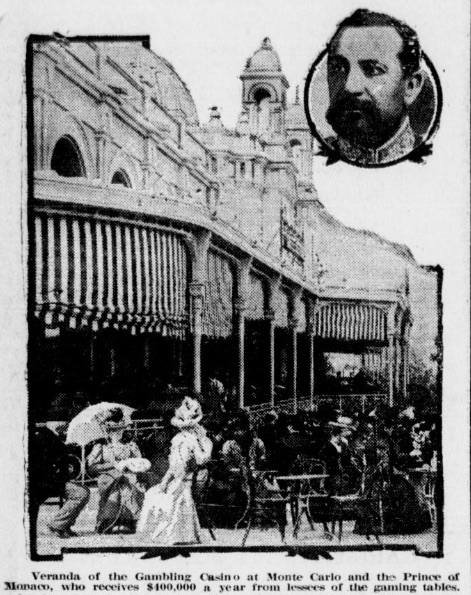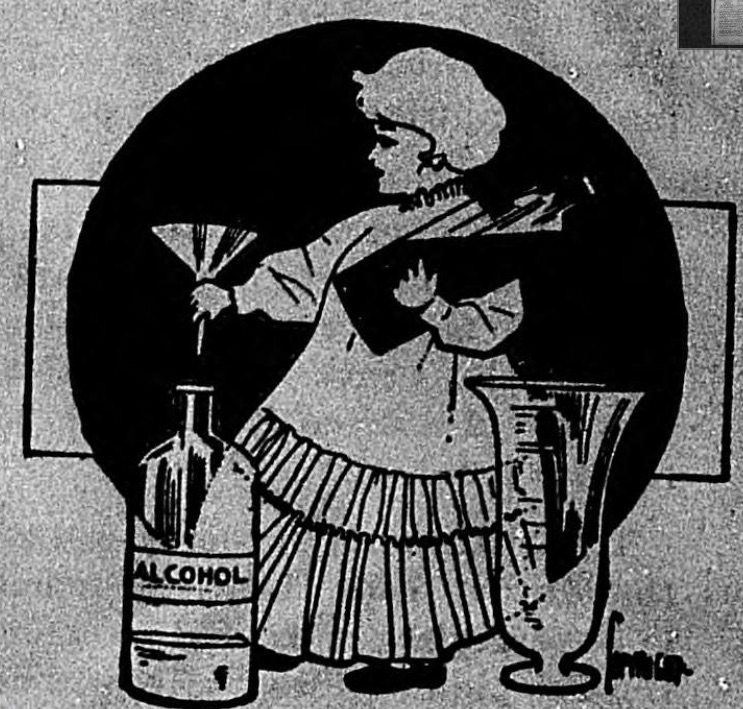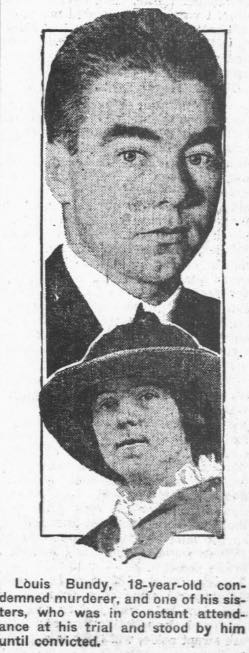
Murder is the deliberate act of taking another person’s life. At no point in human history has the act of murder been eliminated from a society. Some feel that there are people who are just born bad. There is also the opinion that society shapes and forms its murderers, making the act an ugly reflection of the world. Whatever may be the case, there were never better times or a bygone innocence for humans. Murder, in all of its evil shades, has always been a part of human life.
Found In A Trunk

It is difficult for us to imagine that heartless crimes were being committed over 100 years ago. In the summer of 1909, New York City hit the papers with a cruel and bizarre murder.
The granddaughter of General Franz Sigel, a Union general in America’s Civil War, went missing for several days. Elsie Sigel’s relationship with her parents was sketchy, at best, but they were worried that something bad had happened to her. She was only 19-years-old.
At the same time, a man named Leon Ling also went missing. His worried cousin went to Ling’s apartment and knocked on the door. There was no answer, but the cousin could smell a death odor coming from inside the apartment. The cousin ran to the police station and had them return to the apartment to search inside.
A black trunk was found in the room. Rope was tied around the trunk to hold it closed. When the police cut the rope, the trunk’s lid lifted up to expose the half dressed, bloated corpse of Elsie Sigel. A noose was found tight around her neck and it was determined that she had been dead for at least 10 days.
Police also found hundreds of love letters from women in Ling’s room. Thirty-five of those love letters were from Elsie.
As the police dug deeper, they discovered that Elsie had another lover, Chu Gain. The police talked to Gain and he admitted to the affair. He also claimed that he started receiving anonymous letters, threatening to kill him and Elsie if they continued to see each other. It was all the police needed to confirm that Ling had murdered Elsie.
Ling could not be found. Police started bringing in any Chinese man who fit Ling’s description, but Ling managed to avoid capture.
Rumors spread like wildfire. Some people believed that the body in the trunk was not Elsie at all, but a decoy, and that Elsie and Ling ran away to live together. Some say he was smuggled into Canada and another rumor stated that Ling was smuggled back to China by his fellow men. To this day, no one knows what really happened to Ling.
Blood Oozing From The Trunk

New York City isn’t the only place they stuff dead bodies into trunks. In 1907, two years before Elsie Sigel was found murdered, a trunk arrived in London. While travel trunks arrived in London all the time, this particular trunk was bleeding. On seeing the blood, the trunk was opened and was found to contain the headless and legless body of a woman. The portmanteau that accompanied the trunk was also opened. Inside that was the woman’s head and legs.
The owners of the trunks, Vere Goold, a retired Irish tennis player, and his French wife, Marie, were arrested in Marseilles. The body, it was discovered, was that of a Swedish woman, Emma Livey.
The story goes that Emma liked to visit the gambling rooms in Monte Carlo. One night her lover, possibly a man named Burker, came into the Goold’s Monte Carlo apartment and stabbed Emma, their guest, in the heart. Fearing the worst, such as arrest, the couple claimed that they cut up the body to return the remains to England.
The police suspected that the Goolds killed Emma for her jewelry. The Goolds, it turned out, also had a gambling habit and owed Emma a thousand francs. Police discovered a letter from Emma requesting an immediate return of her money, which may have prompted the murder.
Vere Goold was sentenced to life in prison on Devil’s Island. He committed suicide within the first year. His wife, Marie, was also sentenced to life in prison and died several years later of Typhoid Fever.
A Family Chopped Apart

When news from the United States hits the newspapers all the way over to Australia, you know that it can only be bad news. That was the case in the fall of 1893 when the South Australian Chronicle published a story on “[o]ne of the most fiendish crimes ever perpetrated, even in the United States.” Thanks for the jibe, by the way. And yes, the crime was horrible. A family of six people were chopped to death in Indiana.
As the story goes, a farmer, Denson Wratten, was suffering from typhoid fever. Another nearby farmer stopped by to check on the man and his family. He arrived at their farm and knocked on the door. No one answered, so the curious neighbor opened the door and walked in. He never would forget the sight that greeted him.
“In one room he saw the dead bodies of Wratten’s aged mother and his wife. The sight was terrible, and showed the victims had been slain with axes. The old lady had had a terrible struggle to retain a leather bag containing some money, and the thieves – for it was for the sake of plunder that the crime was committed – had chopped off the woman’s hands to make her release the booty. She was also chopped in a fearful manner about the head. The poor wife had evidently come to the assistance of the old woman and received a terrible death. Two children in an adjoining room had their heads cut open, and a third child, a couple of years old, was similarly butchered.” The sick husband was killed in his bed.
After the discovery of the crime, all the people in the area took up arms, determined to lynch whoever committed the murders. Fortunately, the murderer, James E. Stone, was discovered, tried, and sent to the Indiana State Prison. He was hanged for the murders he had committed, it turned out, with a corn cutter.
Headless Body Of Kanyapella
John Adam Anderson, at the tender age of 15, left his uncle’s home one day to go on a rabbiting expedition. He took with him an axe and a dog and headed out from the house in Kanyapella, Australia. That was the last time he was seen alive.
The next day, after the boy didn’t return home, the uncle went out to search for him. Not far from the home, about a mile and a half, the uncle heard the dog barking and went to see what the problem was. The dog came to the uncle, whining and visibly upset, and took the uncle to a spot where dead timber littered the ground. There the uncle found the body of the boy. His head was missing.
No doubt the uncle was shaken as he made his way back to his house. The next day, the uncle sent for the police. Why so long of a wait? The year was 1913 and the article does not state whether the man had a vehicle or any immediate communication with the outside world.
When the police arrived, they investigated the scene. It was determined that someone had shot the boy through the heart at some distance and then axed the boy’s head off. A search found the boy’s head some 70 yards from the body. The report stated that:
“The head was cut and battered about in a frightful manner, bearing no fewer than nine huge gaping wounds, inflicted with the blade of an axe, which was lying close by. The features were rendered unrecognisable.”
A young man who lived nearby, David Clarence Freeman, was committed to trial for the murder and decapitation of John Adam Anderson. He was known to the boy and his uncle as a troubled young man who had previously made a shooting gesture towards the uncle. During the pre-trial, it was learned that:
“[T]he head of the deceased had been shorn off. There were nine shot wounds on the left side and 26 shot wounds in the chest and side. The heart was not wounded. In the head were several deep wounds. There was no blood on the hair of the head, and this indicated that the lad had been first shot and then decapitated.”
It was also confirmed that Freeman had gone out the same day that Anderson left his uncle’s home to go hunting. His sister remembered him returning home with blood on his stockings and trousers.
When it finally came time for Freeman’s trial, he was declared unfit to plead because of his childlike behavior and outbursts. “He was ordered to be detained in the Bendigo gaol during the Governor’s pleasure.”
Body Part Parcels

Labelled as “one of the most sensational murder trials of the century” in 1898, newspapers across the United States and around the world followed the case of Martin Thorn, a German barber, and Augusta Nack, a midwife.
In a strange sort of lover’s triangle, it was discovered that Augusta Nack had lured one of her lovers to her rented home in New York City. She sent the man, Guldensuppe, upstairs where her other lover, Martin Thorn, hid. Augusta Nack claimed that she waited outside in her garden and that after she heard the sound of a gunshot, Thorn came outside and told her that he had shot Guldensuppe. She left the property and did not return until the next evening. At that point, according to her account, “she was then shown by Thorn a number of parcels, which he said were Guldensuppe’s clothes, but which really contained parts of his body. One parcel, which he carried himself, contained the murdered man’s head.”
Both Thorn and Nack took some of the parcels onto a ferry. The head had been encased in plaster of Paris and all the parts were wrapped in gray paper. They dumped the head into the river and, at later times and in different places, they dumped the rest of the body parts.
According to Thorn, Nack was very much involved in the murder and dismemberment of Guldensuppe. According to him, Nack had shot Guldensuppe herself and helped Thorn cut up the body into small, more manageable pieces.
However, it didn’t matter what Martin Thorn claimed. Augusta Nack had turned State evidence and was free from being tried for the murder.
Martin Thorn was found guilty. He was sent to Sing Sing Prison and there he met with the electric chair. The New York Times reported that, “Thorn went to his death without showing fear, and the wonderful nerve which he exhibited from the time of his arrest kept him up until the electric current stopped all signs of life in fifty-nine seconds.”
Booze, Abuse, And Revenge

Never mess with a mom. Her kids may very well exact their revenge on you.
On February 27, 1870 in Kensal New Town, Mother Camken and her husband, Philip Rolph, got into an argument. The story goes that Camken, a widow with a son from her previous marriage, was a heavy drinker. She and her second husband fought over the amount of money she was spending on alcohol. “Rolph struck his wife a heavy blow on the face, which stunned her, and he then left the house.”
The newspapers reported that the woman was “exasperated” after being struck, but she was probably more accurately scared and, quite possibly, in shock. She went to find her son, James Camken, to tell him what had happened. The marriage had been sinking for some time with constant arguments.
Her son was understandably angry that his step-father had hit his mother and, after getting some money from his mother, he went off to go get drunk because being pissed off and drinking booze always go well together.
While getting trashed at the beer shop, the son was overheard saying, “My —- father-in-law shall never see the light of another morning.” Sure enough, after getting soundly hammered, the son went off in search of Rolph.
He found his step-father in the retort room of the Westminster Gaslight Company and attacked him. The son “struck him such a terrible blow as felled him to the ground. He then pounded his head against a piece of iron in such a manner as not only to beat in Rolph’s skull, but also to dislocate the cervical vertebrae, and the man was dead long before his assailant ceased beating him.”
Three men stood nearby and watched as the son beat in Rolph’s head. No one interfered and after it was done, no one stopped the son from escaping.
James Camken was charged with manslaughter for the murder of his step father. He lived until 1937.
Family Duel Or Not
Out of Colorado in 1913 came a strange story with no background and very little follow-up. According to an initial account, the husband, Robert Stanley, and wife got into a duel with each other in their bedroom in front of their four-year-old daughter. Both the husband and the wife shot each other. Then, according to speculation, the mother shot her daughter:
“In the body of the girl were found two bullet wounds from the caliber revolver which was found by the mother, leading to the belief that the mother herself inflicted the fatal wounds upon the girl rather than have her remain unprotected in the world after she realized that both she and her husband were dying.”
In one newspaper account, the girl’s body was found beside that of her father’s. In a different newspaper account, the girl was found “on the bed with a bullet through her heart and her little knees bent under her as though she pleaded with her mother and father to cease their pistol duel…”
A neighbor came into the house after no one answered the door and found the bodies. A gun was found beside the father and another beside the mother.
What is so strange about this case is that there is a strong possibility that it wasn’t a duel. The neighbor who found the bodies said that the man had a number of bullets in his body. In fact, they both had bullet wounds on the face and body, which makes one wonder how the mother would have been able to fire off the fatal shots at her daughter after having been hit so many times herself. Another strange fact is that they were all dressed in their night gowns. Did they break out in an argument before bed or were they woken up by a murderer? There was no history of violence between the young couple and while one rumor stated that they may have been suffering from financial difficulties, there was no prior indication that there was serious trouble brewing.
Many of the neighbors felt that this was a murder and that the guns were placed there as a “blind,” but the tragedy was labeled as a family murder and there was no further investigation into the crime.
Poor Mary
There are innumerable accounts in old newspapers from across Europe, United States, and Australia detailing family murder suicides where the head of household wipes out his entire family. One particularly upsetting case happened in Hightown, Manchester, 1905.
David Taylor, at the age of 50, sat awake one night waiting for his wife and two sons to fall soundly to sleep. After he was certain everyone was in a deep slumber, including the house servant, he grabbed a revolver and loaded it up.
He shot his wife, Mary, in the head. He then went into the boys’ room. They were ages 11 and 15. He shot them each two to three times. Then, for some strange reason, Taylor shot and killed the family dog and killed the family cat with chloroform.
When his grisly task was complete, he returned to the bedroom and wrote a note for the police. He got back into bed and shot himself in the head with his last bullet.
His note read:
“Poor Mary never moved. None of them ever knew anything, I think, and the servant seems to have heard nothing. I was afraid she might awaken. If I could have obtained poison I would have done so, but failed, and so had to use the rougher way. Now it is my own turn and I must succeed. I had to use two or three for the boys before I was sure they had gone. I was afraid they might be suffering. My only fear now is that one will not be enough for myself. My loving boys – I tried not to spoil their faces.”
The servant discovered the bodies in the morning and ran to get the police. The police learned that Mary Taylor had been ill for some time and that the cost of her treatment was putting a strain on the family’s finances. A friend of the family related that Taylor had to ask “his wife to hide razors and such things, as at times he scarcely felt responsible for his actions.”
Murdered For $20

It seems as though there are an abundance of killers with the same last name. Take, for instance, Louis Bundy. This seemingly likable high school kid became the youngest man to be sentenced to the gallows back in 1914. The 18-year-old’s crime was murder.
In his death cell interview, young Louis told the reporter how he got himself into the San Quentin Prison in California. It was before Christmas and Louis needed some money so that he could give his sweetheart a Christmas bash she wouldn’t forget. The young man did not want to ask his parents for the money. Instead, he had the brilliant idea to steal it from someone.
In his own words, Louis told the reporter why he did it:
“It was the idleness, I guess. Running around with a gang who prided themselves on being spenders, without scrupling how they got the money, each wanting to outdo the other in making a show. Pool, gambling, hookey from school, flirting with girls in the park and on the streets, and wild joy rides whenever we could pick up ‘live ones.’”
Louis attacked a messenger boy. He claimed that he had only tried to knock the boy out to take his money, $20, and that the boy was still yelling as Louis ran away from the scene. The next day, Louis claims he learned that he had killed the boy:
“Yes, he died. Though I didn’t mean to kill him. I only wanted to knock him out. It was not until the next day that I knew he was dead. He was still screaming when I took the money and ran away. I wanted to give my girl a good time Christmas day.”
In reality, Louis beat the 15-year-old messenger boy with a rock and an axe handle. Louis had every intention of killing the boy because, as Louis had admitted, “he knew me and would have squealed on me.”
Because of his age, Louis attempted to gain clemency, but to no avail. He was hanged to death November 5, 1915.
Smothered Infant Son
In August 1904, news came out of Melbourne that Margaret Ann Woods had killed her infant son shortly after he was born in a maternity house in Sydney. At the time of his birth, no one thought she had killed her baby because she had told others that she had given the infant to her sister.
A detective on the case claimed that Margaret Ann Woods made the following statement after she was arrested:
“I did kill the baby. I put my hand on its throat and over its mouth until I suffocated it. I held it that way until it was quite dead. Afterwards I took the body and put it under Ah Sang’s house, which is raised on piles high from the ground. Three months afterwards two Chinese, who were pulling up weeds about the yard, found the baby’s body under the house and threw it into the river at Botany, near the house. Afterwards I came on to Melbourne. You can’t hang me for it, can you?”
The following month, Margaret Ann Woods appeared on trial. Because there was no body and because the detectives had fumbled with questioning during the investigation, the jury did not even bother to leave the box to deliberate the case. She was found not guilty and was set free.

